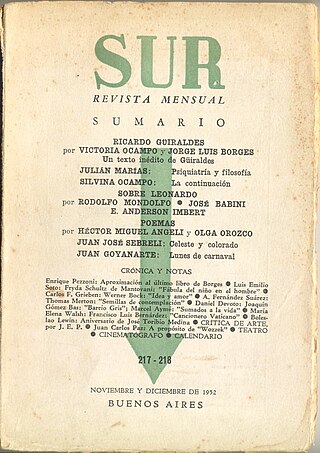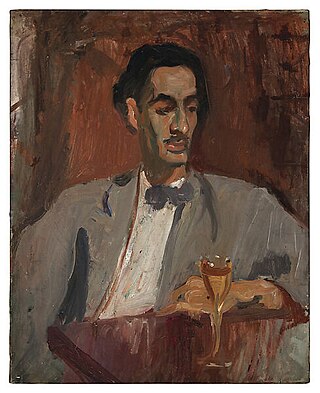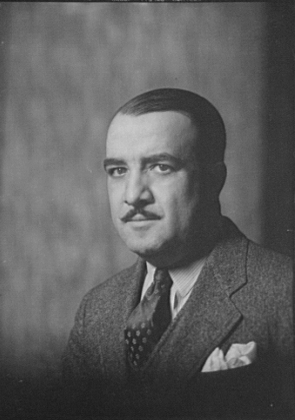Related Research Articles

Alejo Carpentier y Valmont was a Cuban novelist, essayist, and musicologist who greatly influenced Latin American literature during its famous "boom" period. Born in Lausanne, Switzerland, of French and Russian parentage, Carpentier grew up in Havana, Cuba, and despite his European birthplace, he strongly identified as Cuban throughout his life. He traveled extensively, particularly in France, and to South America and Mexico, where he met prominent members of the Latin American cultural and artistic community. Carpentier took a keen interest in Latin American politics and often aligned himself with revolutionary movements, such as Fidel Castro's Communist Revolution in Cuba in the mid-20th century. Carpentier was jailed and exiled for his leftist political philosophies.

Dulce María Loynaz Muñoz was a Cuban poet, and is considered one of the principal figures of Cuban literature. She was awarded the Miguel de Cervantes Prize in 1992. She earned her Doctorate in Civil Law at University of Havana in 1927.

Sur was a literary magazine published in Buenos Aires between 1931 and 1992.

Amadeo Roldán y Gardes was a Cuban composer and violinist. Roldán was born in Paris to a Cuban mulatta and a Spanish father. It was his mother, the pianist Albertina Gardes, who initiated her children to music.
Martín Fierro was an Argentine literary magazine which appeared from February 1924 to 1927. It was one of the leading avant-garde magazines in the country.

Latin American literature consists of the oral and written literature of Latin America in several languages, particularly in Spanish, Portuguese, and the indigenous languages of Latin America. It rose to particular prominence globally during the second half of the 20th century, largely due to the international success of the style known as magical realism. As such, the region's literature is often associated solely with this style, with the 20th century literary movement known as Latin American Boom, and with its most famous exponent, Gabriel García Márquez. Latin American literature has a rich and complex tradition of literary production that dates back many centuries.
Cuban literature is the literature written in Cuba or outside the island by Cubans in Spanish language. It began to find its voice in the early 19th century. The major works published in Cuba during that time were of an abolitionist character. Notable writers of this genre include Gertrudis Gómez de Avellaneda and Cirilo Villaverde. Following the abolition of slavery in 1886, the focus of Cuban literature shifted. Dominant themes of independence and freedom were exemplified by José Martí, who led the modernista movement in Latin American literature. Writers such as the poet Nicolás Guillén focused on literature as social protest. Others, including Dulce María Loynaz, José Lezama Lima and Alejo Carpentier, dealt with more personal or universal issues. And a few more, such as Reinaldo Arenas and Guillermo Cabrera Infante, earned international recognition in the postrevolutionary era.

Jorge Mañach y Robato was a Cuban writer and attorney, considered among the most distinguished of his time.

Carlos Enríquez Gómez, was a Cuban painter, illustrator and writer of the Vanguardia movement. Along with Víctor Manuel, Amelia Peláez, Fidelio Ponce, Antonio Gattorno, and other masters of this period, he was involved in one of the most fertile moments in Cuban culture. He is considered by critics to be one of the best, and most original, Cuban artists of the 20th century.

Víctor Manuel García Valdés was a Cuban painter. He was an early member of the "Vanguardia" movement of artists who, beginning in the 1920s, combined European concepts of Modern art with native Primitivism to create a distinctly Cuban aesthetic.

Guillermo de Torre Ballesteros was a Spanish essayist, poet and literary critic, a Dadaist and member of the Generation of '27. He is also notable as the brother-in-law of the Argentine writer Jorge Luis Borges.

Juan José Sicre was a Cuban sculptor. His most famous sculpture is of José Martí y Pérez (1958) in the Plaza de la Revolución in Havana.
Samuel Feijóo Rodríguez was a Cuban writer and artist specializing in painting and illustration.

Moisés Simons, was a leading Cuban composer, pianist, and orchestra leader. He was the composer of El Manisero which is considered by many to be the most famous piece of music created by a Cuban musician and has since been recorded by other musicians from around the world hundreds of times.
After its arrival in Cuba at the end of the 18th century, the pianoforte rapidly became one of the favorite instruments among the Cuban population. Along with the humble guitar, the piano accompanied the popular Cuban guarachas and contradanzas at salons and ballrooms in Havana and all over the country.
Lyceum and Lawn Tennis Club was a Cuban women's cultural, social, and physical fitness organization. Founded in 1929 in Havana, its first president was the journalist, suffragist and feminist, Berta Arocena de Martínez Márquez. The society established Cuba's first free public library, first children's library, and first course of instruction for librarians.
La Gaceta Literaria was a bimonthly avant-garde literary, arts and science magazine which appeared in Madrid, Spain, between 1927 and 1932. It is known for its leading contributors and editorial board members.

Conrado Walter Massaguer y Diaz was a Cuban artist, political satirist, and magazine publisher. He is considered a student of the Art Nouveau. He was the first caricaturist in the world to broadcast his art on television. He was first caricaturist to exhibit on Fifth Avenue. He was the first caricaturist in the world to exhibit his caricatures on wood. He, and his brother Oscar, were the first magazine publishers in the world to use photolithographic printing.

Social was a Cuban magazine created by the brothers Conrado Walter Massaguer and Oscar H. Massaguer, and was one of the most important magazines in Cuba in the early half of the twentieth century. Through this magazine, Cuba was introduced to the Art Deco movement. Social was the first magazine in the world to use photolithographic printing.
The Minorista Group was an avant-garde group of Cuban artists, writers, philosophers, poets, and others collectively called the "vanguard of the intelligencia," active during the 1920s that had an enormous influence on events in Cuban politics and society in the early half of the twentieth century. The Minorista Group was founded in 1923 by Rubén Martínez Villena. The Minorista Group was created after the events of the Protest of the Thirteen, which had been led by Villena, and came to challenge the administration of Alfredo Zayas y Alfonso. The original protest was against the sale of the Santa Clara convent by the government for corrupt purposes.
References
- 1 2 3 4 5 6 7 Lori Cole (December 2011). "What is the avant-garde? The questionnaire as historiography". Journal of Art Historiography (5). ProQuest 1017601207.
- 1 2 3 Francine Masiello (1993). "Rethinking Neocolonial Esthetics: Literature, Politics, and Intellectual Community in Cuba's Revista de Avance". Latin American Research Review . 28 (2): 4–26. JSTOR 2503576.
- 1 2 Ingrid Robyn (Fall 2016). "Curating an International Avant-Garde: revista de avance and the Visual Arts". Transmodernity: Journal of Peripheral Cultural Production of the Luso-Hispanic World. 6 (2): 131–132. doi: 10.5070/T462033558 .
- 1 2 3 4 5 6 7 "'Revista de Avance' (1927-1930)" (in Spanish). Rialta. Retrieved 10 September 2022.
- ↑ "Revista de Avance" (in Spanish). University of Tübingen. Retrieved 10 September 2022.
- ↑ "Revista de avance (Cuba)" (in Spanish). Hemeroteca Digital. Retrieved 10 September 2022.